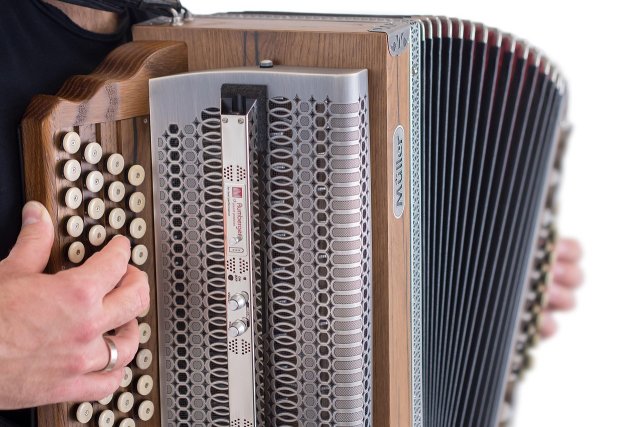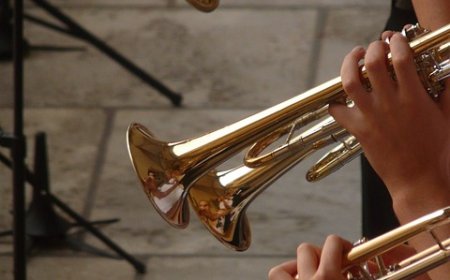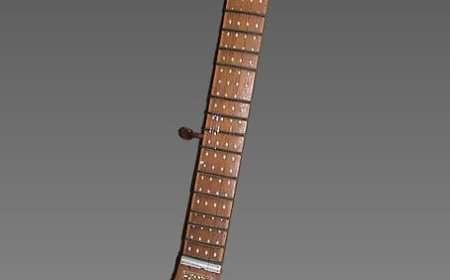Accordion Facts for Students | Learn About the Accordion and How It Works
Discover the accordion—a unique instrument played with keys, buttons, and bellows. Learn how it works, its parts, history, and famous performers in this student-friendly guide.

🎼 All About the Accordion
🥇 Introduction
The accordion is a fascinating instrument that uses keys, buttons, and air pressure to make music. Often called a "squeezebox", it's famous for its ability to play both melody and harmony at the same time. You've probably heard it in folk dances, French cafés, polka music, Latin styles, and even video game soundtracks. The accordion is fun to play and great for both solo and group performances.
🎶 What Is an Accordion?
An accordion is a portable keyboard instrument that creates sound using air pushed through reeds inside the instrument. It has two main sides:
-
The right side plays the melody using either piano-style keys or buttons.
-
The left side plays chords and bass notes using buttons.
In the middle is the bellows-a foldable air chamber that expands and contracts. By moving the bellows and pressing keys or buttons at the same time, the player creates musical notes. The accordion is like having a mini orchestra in your hands!
🧩 Parts of the Accordion
The accordion may look like a big box, but it's full of smart design. Here are the main parts:
-
Bellows - The folding middle part that pushes air through reeds
-
Treble keyboard - Piano-style keys (or buttons) on the right side for melody
-
Bass buttons - Rows of buttons on the left side for chords and bass notes
-
Reeds - Thin metal strips that vibrate to produce sound
-
Grille - The decorated front panel where sound comes out
-
Air button - A special button that lets you move the bellows silently
-
Straps - Shoulder and hand straps that help hold the accordion while playing
Some accordions use piano keyboards, while others use button keyboards-this depends on the musical tradition.
⚙️ How Does the Accordion Work?
The accordion creates sound using free reeds-tiny metal strips that vibrate when air flows across them. Here's how it works:
-
The player expands or compresses the bellows to move air.
-
At the same time, they press a key or button, opening a valve.
-
The air flows across a reed that vibrates to produce a note.
-
Different buttons or keys control different pitches and sounds.
The right hand usually plays the melody, while the left hand plays accompaniment (chords and bass). Some advanced accordions can even let players control dynamics (volume) by how quickly they move the bellows.
📜 History of the Accordion
The accordion was invented in the early 1800s in Europe. Its first version was created by Cyrill Demian, an instrument maker from Vienna, in 1829. His accordion had buttons and a bellows and could play chords easily.
Over time, the accordion became popular in:
-
Germany and Austria for folk dancing
-
France and Italy for café and street music
-
Eastern Europe for traditional celebrations
-
South America for tango and vallenato
-
North America in Cajun, Zydeco, and Tex-Mex music
In the 20th century, accordions were used in jazz, classical music, and film soundtracks. Today, it's played in both traditional and modern music styles worldwide.
🥁 Famous Accordion Players
These talented musicians helped bring the accordion to life in different music styles:
-
Astor Piazzolla - Argentine composer and accordionist famous for tango nuevo
-
Lawrence Welk - American bandleader who brought accordion to TV audiences
-
Julien Labro - Modern classical and jazz accordionist
-
Sharon Shannon - Irish accordionist known for Celtic and folk music
-
Flaco Jiménez - Tex-Mex accordion legend
-
Kimmo Pohjonen - Finnish performer known for experimental accordion music
-
Dick Contino - American accordionist and teen idol in the 1950s
🎶 Learning to Play the Accordion
The accordion is great for students who like hands-on instruments and musical variety. It develops rhythm, coordination, and multitasking skills, since players must manage both hands and the bellows at the same time.
When learning accordion, students will:
-
Learn to play melody with the right hand
-
Practice bass and chords with the left hand
-
Develop timing and rhythm between both sides
-
Use the bellows smoothly for expression
-
Explore songs from folk, classical, or world music traditions
Some students begin with a smaller accordion (like 12 or 32 bass buttons) and grow into full-size instruments.
😄 Fun Facts About the Accordion
-
The accordion is sometimes called a "squeezebox" because of how the bellows are used.
-
It's one of the only instruments that you wear and play at the same time.
-
Accordions come in many sizes-from small toy models to giant concert instruments.
-
There are over 120 bass buttons on some full-size accordions!
-
Some electronic accordions can connect to speakers and sound like organs, trumpets, or guitars.
-
You can find accordion music in movies, video games, folk dances, and even metal bands!
👧 Kid-Friendly Summary
The accordion is a cool instrument that you wear like a backpack and play with your hands. It has buttons or piano keys on each side and a middle part that moves like an accordion (that's why it's called that!). When you press the keys and move the bellows, it makes music. It's fun, loud, and great for dancing and happy songs.
📚 Vocabulary Words
Accordion - A portable keyboard instrument that makes music using air and reedsBellows - The foldable middle part that moves air inside the accordionTreble Keyboard - The right-hand side that plays the melodyBass Buttons - Left-hand buttons that play chords and bass notesReeds - Thin metal strips inside the accordion that make soundAir Button - A button that lets air move through without playing notesSqueezebox - A fun nickname for the accordionFolk Music - Traditional music passed down in different cultures
❓ Interactive Quiz (8 Questions)
1. What kind of instrument is the accordion?
A. String
B. Percussion
C. Keyboard and wind
D. Brass
2. What part of the accordion moves air to create sound?
A. Pedals
B. Bellows
C. Strings
D. Mallets
3. What does the right-hand side of the accordion usually play?
A. Chords
B. Drums
C. Melody
D. Nothing
4. What are the buttons on the left-hand side for?
A. Controlling the bellows
B. Playing chords and bass notes
C. Making lights blink
D. Adjusting the volume
5. What are the metal pieces inside the accordion that vibrate to make sound?
A. Strings
B. Valves
C. Plectrums
D. Reeds
6. Which country is famous for using the accordion in tango music?
A. Canada
B. Argentina
C. Japan
D. Norway
7. What is a fun nickname for the accordion?
A. Boom box
B. Puff piano
C. Squeezebox
D. Wind harp
8. Who was a famous accordion player in Irish folk music?
A. Sharon Shannon
B. Taylor Swift
C. Yo-Yo Ma
D. Wolfgang Mozart



















































